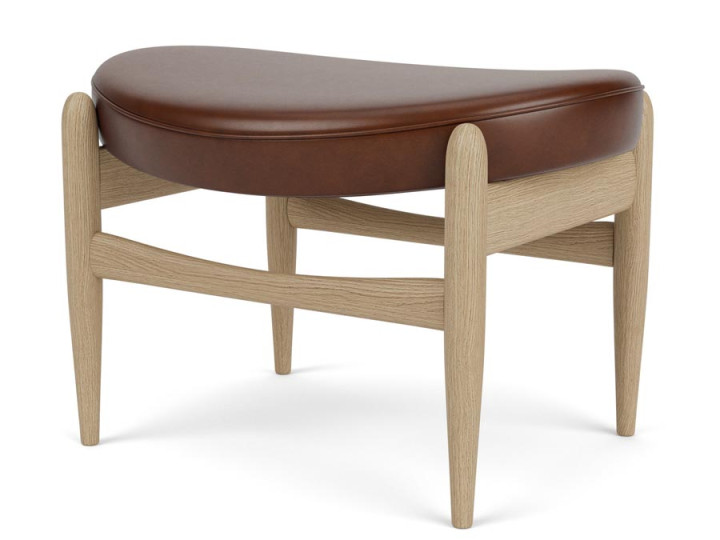Mid-century modern scandinavian ottoman "Elizabeth" in oak.
-
Ib Kofod-Larsen
-
AUDO CPH (MENU)
- MN012 On demand. Delivery time 8-10 weeks
Mid-century modern scandinavian ottoman "Elizabeth" in oak. *Required step
In order to help you to choose, and to receive samples, do not hesitate to contact us by email: contact@galerie-mobler.com or by phone: 01 43 33 20 12
Originally dubbed the U-56, the Elizabeth Footstool by Ib Kofod Larsen is a classical and comfortable accent piece for use when reclining in the corresponding Elizabeth Chair, which takes its name from Queen Elizabeth II, who purchased the design during a visit to Copenhagen in 1962.
| Year | 1962 |
| Dimensions | H36 cm / W57 cm / D42 cm |
| Material | Oak or walnut, plastic, steel, solid beech, plywood, foam, felt, quilt foam, pocket springs, rubber. |
| Style | Classique Neuf |
| Origin | Denmark |
| Fournisseur | MENU |
Ib Kofod-Larsen
Denmark,1921-2003
Ib Kofod-Larsen graduated as an architect from the Royal Danish Academy of Fine Arts in 1945, and cooperated with a range of Danish and international cabinetmakers and producers. When Danish Fiberglass Industry in 1953 commissioned Ib Kofod-Larsen to collaborate on the manufacturing of a chair in one heating-hardened polyester piece, the material had only been in use for 5-6 years in the US. Fibre-armed polyester provided designers in opposition to the predominant Danish Kaare Klint School, and in the line of the Danish architect Finn Juhl, new opportunities of free experimentation. Opening up to the world of man-made materials, Ib Kofod Larsen, experimented with different types of seating shells. Ergonomics was part of his preoccupation with making a seating shell that seemed to provide good support in various sitting positions and for various proportions. His step out of the comfort zone treading uncharted territory was initiated at the Cabinetmakers’ Guild’ Furniture Exhibition (later by the name SE) in 1949, showing a cupboard inlaid with yellow Perspex, for Danish furniture maker Christensen og Laursen, boldly juxstaposing it with maple and Brazilian rosewood. Within the same frame, a dually purposed dining table had white formica/ Brazilian rosewood on reverse sides. Literature and media source: Lars Dybdahl, Dansk design 1945-1975, Valby: Borgen, 2006 Frederik Sieck, Nutidig Dansk Møbeldesign, København: Nyt Nordisk Forlag Arnold Busck, 1999 Mobilia, June 1955 Dansk kunsthåndværker leksikon, København: Forlaget Rhodos, 1979















































































































